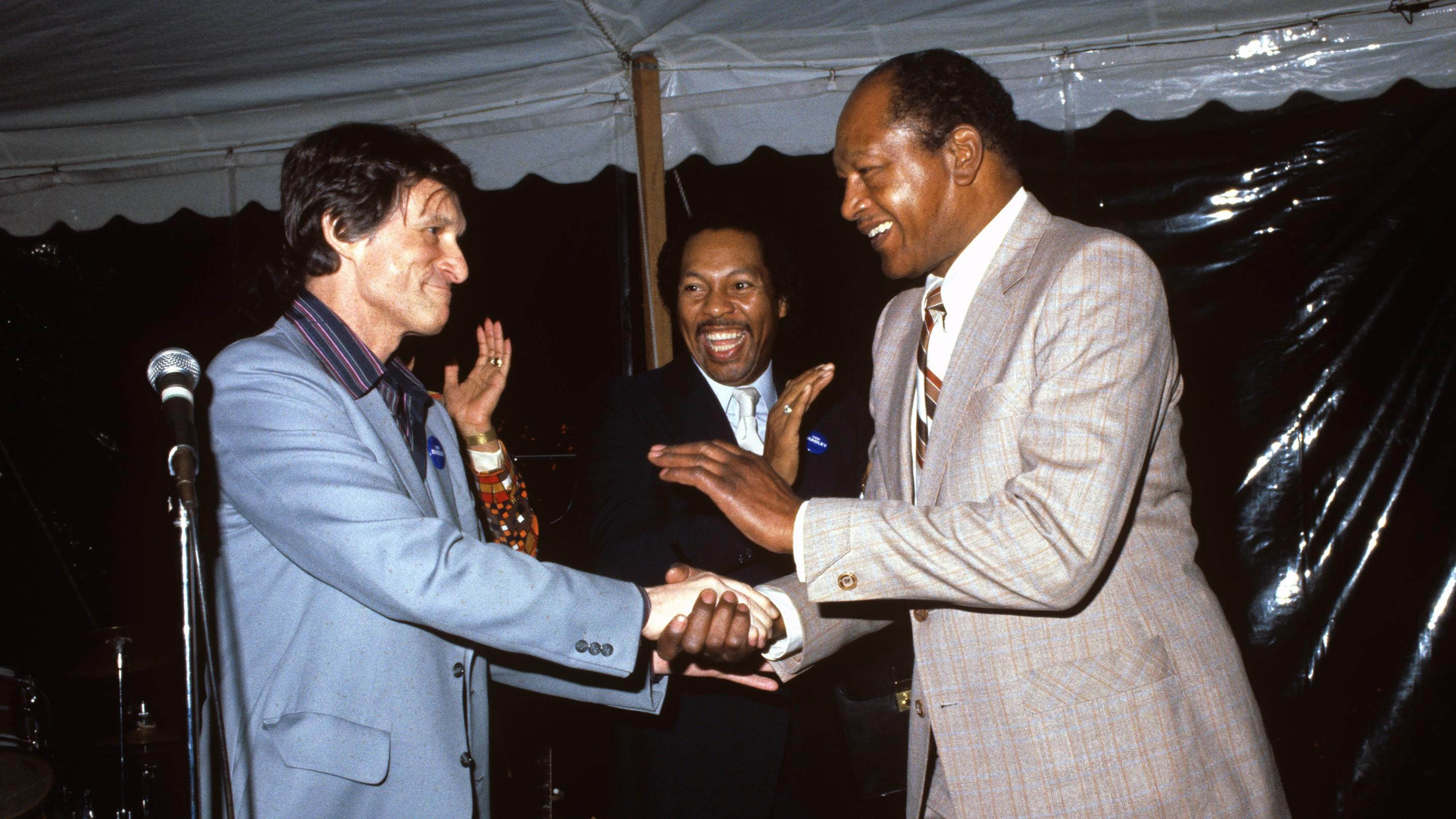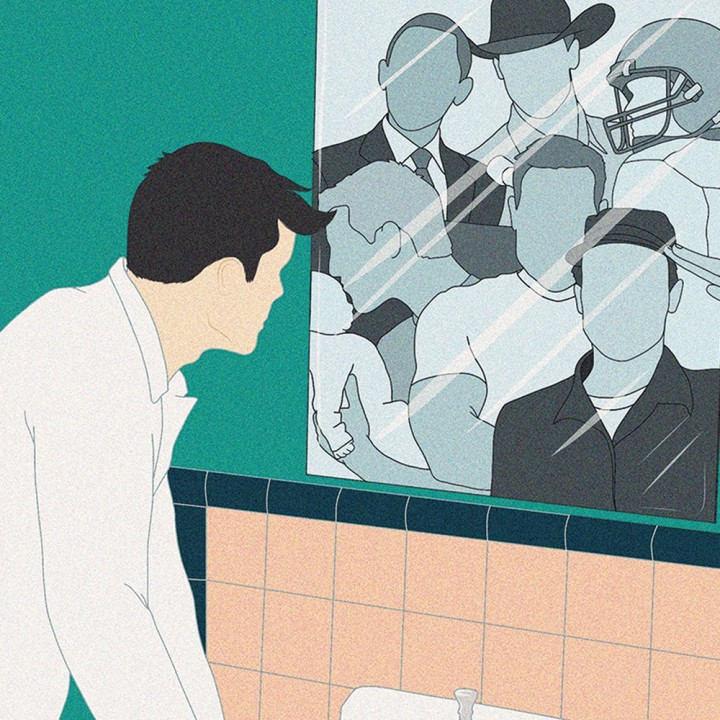
Hef the Politician and Playboy's History in Politics
No one thinks of the man in pajamas as a political force. He never stood on a stage, never made a speech introducing a candidate, never ran for office, never hosted a talk show on Fox, or any event where people raised their voice. But if you open your definition of politics to include an agent of change, you brush up against the real Hugh Hefner.
We should think of that term paper as something that changed America. The student, of course, was Hugh Hefner, and he would return to these questions in a series he penned called "The Playboy Philosophy"—a 25-part teach-in on sex that he immodestly called the "Emancipation Proclamation of the Sexual Revolution." College freshmen were stunned to learn that some of the very things they yearned to try were outlawed. Their parents turned out to be surprised, too. And you have to realize that in 1962, one out of four college males looked at the magazine.
Hef created the Playboy Foundation, the action arm of the philosophy, and started sending seed money to court challenges. The foundation backed cases on birth control, arguing against the state’s right to "regulate the sexual lives of single persons" while arguing for the "right to privacy." The 1972 Supreme Court decision Eisenstadt v. Baird could have been lifted from the Philosophy: “If the right to privacy means anything, it is the right of the individual, married or single, to be free from unwarranted governmental intrusion into matters so fundamentally affecting a person as the decision whether to bear or beget a child." A year later, that reasoning would propel Roe v. Wade, of which Playboy was amicus curae.
Hef created a magazine that had the eyes of America. He turned those pages over to senators, Supreme Court justices and activists.
When asked what he did during the Sexual Revolution, Hef responded, "I invented living together." He did this by example and by argument. He worked the circuit and forever killed the shameful, sinful, criminal qualifier "premarital." When was the last time you used or heard that word? Sex was sex, and what happened between two consenting adults was no one's business but their own. Census figures support Hef's claim. In 1960, the number of people living together was said to be 16,000, but by 1970, it was supposedly 143,000. He didn't rush to the patent office. That was filled by the guys who thought they invented masturbation.
The Sexual Revolution was fought on the newsstand. Playboy was a political channel, so to speak. It provided a platform read by millions. "Eyeballs" in today's parlance.
In 1962, Hefner introduced the Playboy Interview, the first one being with Miles Davis. These long, detailed conversations gave Martin Luther King, Jr., Malcolm X, Eldridge Cleaver, Cassius Clay and Jesse Jackson a pulpit and exposed George Wallace and George Lincoln Rockwell to cross-examination by Alex Haley—who went on to write something called Roots. The magazine highlighted political candidates—the candid confession by Jimmy Carter in 1976 that he “lusted in his heart” humanized the man, and may have swung the election. And, we regret to say, the magazine interviewed the current president in 1990 when he was just an ostentatious real estate developer. We even put him on the cover.
Hef created a magazine that had the eyes of America. He turned those pages over to senators, Supreme Court justices and activists. Martin Luther King, Jr.'s last published work "A Testament of Hope" appeared in the January 1969 issue. Two months later, an article by Senator Joseph Tydings took on "Americans and The Gun.” And Playboy was the first national magazine to oppose the war in Vietnam, with thoughtful articles by John Kenneth Galbraith and Senator J. William Fulbright. The magazine opposed the war at the same time it supported the soldiers sent to fight that conflict. Units measured their time in Vietnam by the date of the first centerfold pinned to the wall of their hutch. The magazine published "Born on the Fourth of July”—Ron Kovic's searing account of the cost of war. It wasn't just the Sexual Revolution that happened in the pages of Playboy —it was every important matter from civil rights to women's rights to gay rights.
It wasn't just the Sexual Revolution that happened in the pages of Playboy—it was every important matter from civil rights to women's rights to gay rights.
There were individual decisions Hef made that pitted him against the government. He disagreed with the United States Post Office's decision to ban nudity from the mail with the very first issue, which featured a picture of Marilyn Monroe. He was arrested for publishing stills from the film Cry Tough—which had filmed two versions of a love scene. In the U.S version, actress Linda Cristal wore a slip. In the export version, she did not. A police chief in San Mateo, California, pulled the magazine from the stands. Hef responded "If the reading matter of the citizens of any community is to be preselected—a pretty abhorrent thought in itself—I can't think of anyone less qualified to do it than a local police chief."
A Congresswoman, Kathryn Granahan, flew to California to express her views. A headline read: “SMUT PROBER HERE—HINTS RED PLOT.” That’s right. The Sexual Revolution was a “communist invention,” and Hef, the most visible capitalist on the planet, was a puppet of the Kremlin.
In the end, Hef’s most important contribution to sexual freedom was, arguably, a single court case that has largely gone unnoticed. (His daughter, Christie Hefner, brought it up at his memorial.) When cable arrived, it was ungoverned. The Federal Communications Commission tried to extend its power to cover this upstart, to impose its standards of “decency” on this novel form of broadcast. No nudity. No sex. No profanity. The courts decided in favor of the Playboy Channel. And that precedent liberated the internet that followed. Liberation was just a click away.
What can you say about Hef and politics? That he won. He was a disrupter, change agent, provocateur. All of the above.






